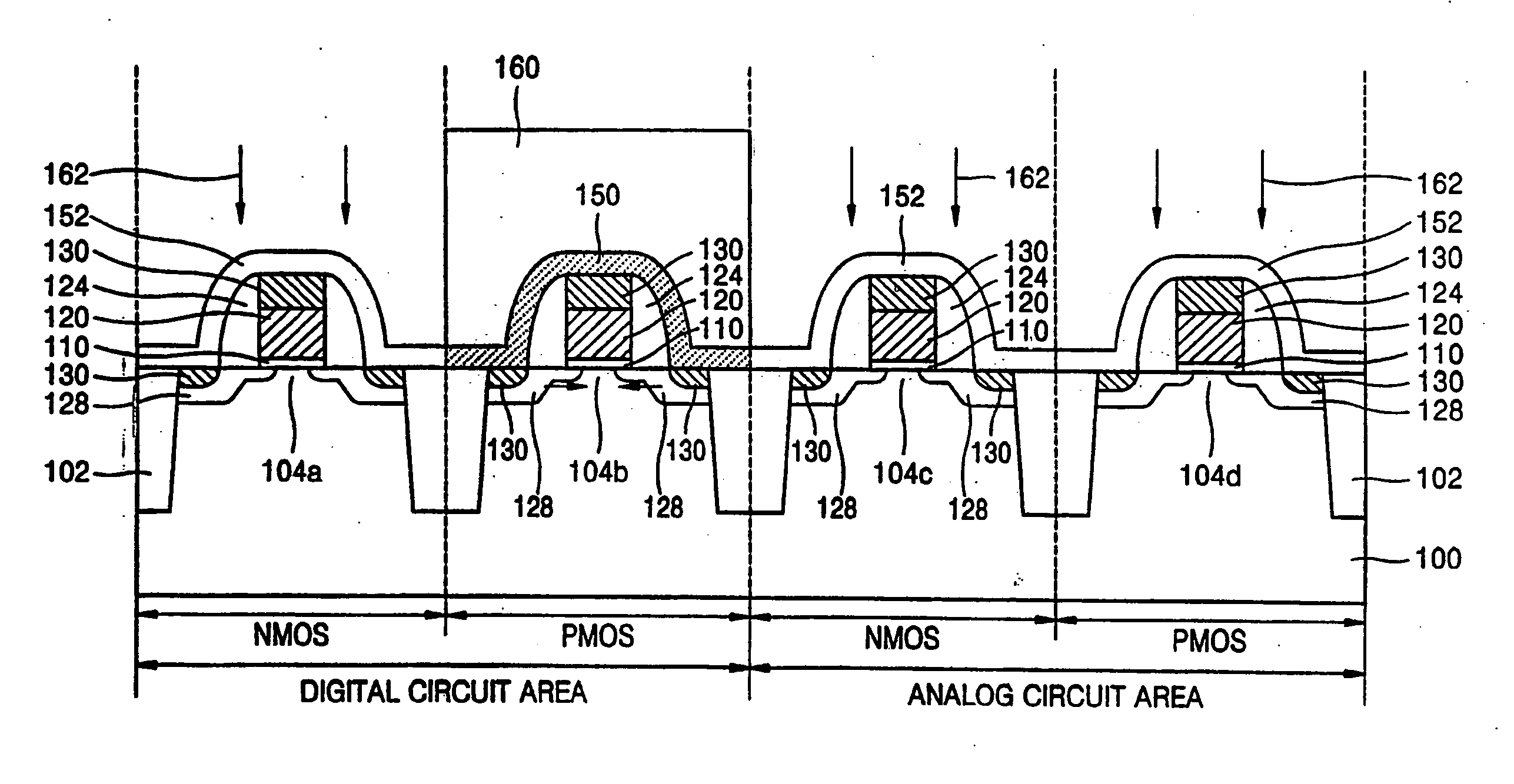Low noise and high performance LSI device, layout and manufacturing method
a technology of low noise and high-performance, applied in the field of large-scale integration (lsi) semiconductor devices, can solve the problems of significant impact on power consumption and switching performance of the device, electrical noise, degrade the device performance, etc., and achieve the effect of reducing the effect of flicker noise on enhancing the performance of the devi
- Summary
- Abstract
- Description
- Claims
- Application Information
AI Technical Summary
Benefits of technology
Problems solved by technology
Method used
Image
Examples
Embodiment Construction
[0065] In accordance with the invention, a semiconductor device such as an LSI device having mixed-signal applications, i.e., analog and digital applications, a layout of the semiconductor device and an approach to manufacturing the device, in which tensile and / or compressive stress are selectively applied to different portions of the device, i.e., analog and digital portions, are provided to enhance performance of the device and simultaneously reduce the effects of flicker noise on the performance of the device.
[0066] In the following description, several embodiments of the invention are described. The various embodiments can be considered to belong to one of three categories of embodiments, the categories being defined by the general approach to selectively applying stress engineering to a device to enhance performance while limiting the effects of noise on the device. FIGS. 3 through 5 contain flow charts which illustrate the three categories, respectively, of the embodiments of...
PUM
 Login to View More
Login to View More Abstract
Description
Claims
Application Information
 Login to View More
Login to View More - R&D
- Intellectual Property
- Life Sciences
- Materials
- Tech Scout
- Unparalleled Data Quality
- Higher Quality Content
- 60% Fewer Hallucinations
Browse by: Latest US Patents, China's latest patents, Technical Efficacy Thesaurus, Application Domain, Technology Topic, Popular Technical Reports.
© 2025 PatSnap. All rights reserved.Legal|Privacy policy|Modern Slavery Act Transparency Statement|Sitemap|About US| Contact US: help@patsnap.com



